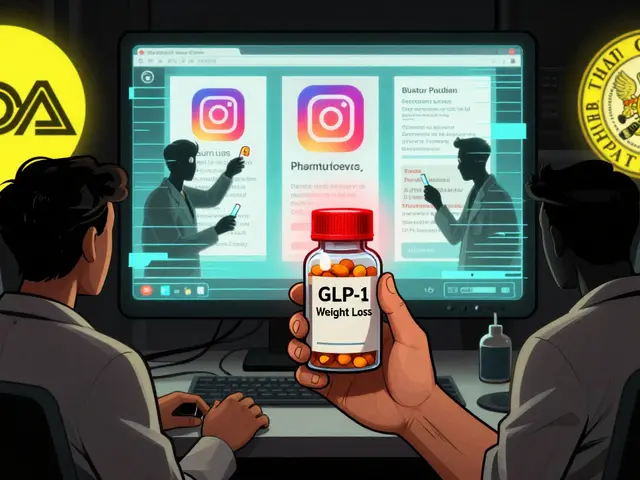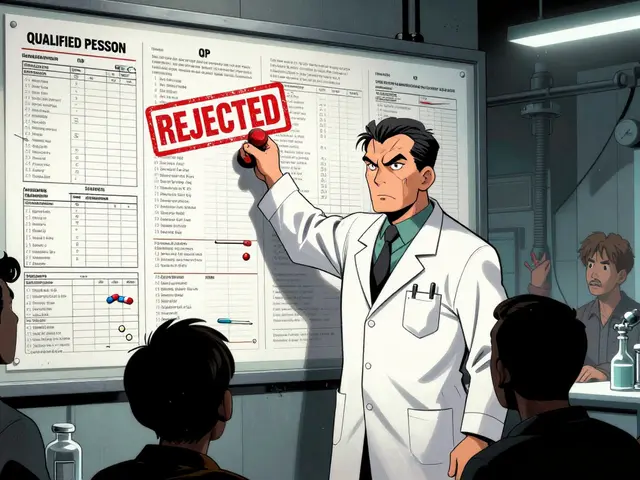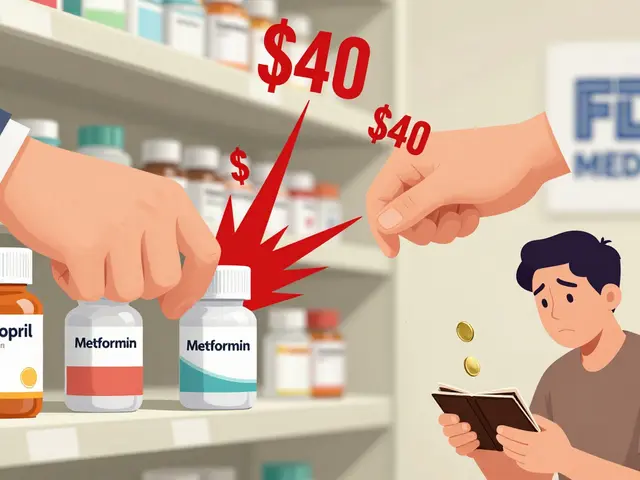
If Duloxetine hasn’t worked for you—maybe the side effects are too much or you’re just not getting results—you’re definitely not alone. Lots of people end up searching for something that fits better, especially when it comes to managing pain or depression. The good news is, in 2025, there are actually several well-known alternatives worth talking about. Some are new takes on old meds, others have gained popularity through real-world results, not just clinical studies.
Each option comes with its own set of strengths and headaches. Knowing the upsides and nasty downsides can help you dodge wasted time and money, not to mention frustration from symptoms that just hang around. Stick with me for the rundown on these alternatives—what they actually do, where they shine, and where they can trip you up. Plus, you’ll find some solid tips to help you talk to your doc and make these choices less overwhelming.
Amitriptyline
If Duloxetine isn’t a good fit, amitriptyline is one of the oldest alternatives people turn to for chronic pain and depression. It’s a tricyclic antidepressant, and doctors have been writing scripts for it since the ’60s. What’s surprising is that in 2025, after all the fancy drugs we’ve gotten since, amitriptyline is still one of the most reliable backup plans for nerve pain and mood issues.
Doctors often recommend it off-label for chronic pain and especially for nerve pain—stuff like diabetic neuropathy or fibromyalgia. Even if it’s not officially “approved” for pain by every country’s drug administration, real patients and plenty of doctors swear by it when newer options don’t hit the mark.
Pros
- Works really well for nerve pain—sometimes even when nothing else helps
- Can help with sleep if taken at night (it’s pretty sedating, so that’s a bonus for some people)
- Costs much less than most brand-name drugs, making it accessible even if you don’t have great insurance
- Treats both depression and certain types of pain—kills two birds with one stone
Cons
- Major downside: anticholinergic side effects—things like dry mouth, constipation, urinary trouble, blurred vision, and feeling groggy
- Can make you super drowsy, so it’s almost never a good idea if you need to stay alert
- Not recommended for people over 65—the fall risk and confusion can get pretty serious
- Weight gain is pretty common, especially if you take it for months
- If you already have heart issues, amitriptyline can mess with your heart rhythm—it’s not the best match in those cases
One quick tip: Most doctors start with really low doses (like 10 mg at bedtime) just to see how you react, then raise the dose if needed. It’s not fast-acting—give it several weeks to see the full effect. You’ll usually notice the sedating effect first, and the pain relief can creep up more gradually.
| Amitriptyline Use Case | Success Rate (in chronic pain)* | Common Dose |
|---|---|---|
| Neuropathic pain | ~30-60% | 10-75mg/day, bedtime |
| Depression | ~50-70% | 25-150mg/day, divided |
*Estimates from clinical data and patient surveys worldwide
If you’re thinking about switching from Duloxetine to amitriptyline, talk to your doctor about the side effect profile—especially if you’ve got a sensitive stomach, a history of falls, or heart problems. For many folks, though, it’s a solid, no-nonsense alternative that’s been helping people for generations.
Venlafaxine
Venlafaxine is known as an SNRI—short for serotonin-norepinephrine reuptake inhibitor. It pops up a lot as a first-line alternative to duloxetine, especially for treating both depression and certain chronic pain issues. You might see it go by the brand name Effexor XR. One thing that stands out about venlafaxine is its ability to boost both serotonin and norepinephrine in the brain. That double action matters if you've got persistent depression or nerve pain that hasn’t budged with plain SSRIs.
This med is pretty versatile. Doctors often use it for major depressive disorder, anxiety, and off-label for things like neuropathic pain. There’s solid research backing its effectiveness, and real-world numbers suggest around 60% of people see big improvements in mood symptoms. Venlafaxine doses can go much higher than duloxetine, which sometimes helps people who are “hard to treat.”
Pros
- Helps with both depression and some types of chronic pain.
- May improve symptoms when SSRIs fail.
- Often well-tolerated at lower doses.
- Widely available in generic forms, which keeps the cost lower.
Cons
- Can raise blood pressure, especially at higher doses—watch this closely if you have hypertension.
- Stopping venlafaxine suddenly usually leads to nasty withdrawal symptoms—tapering slowly is a must.
- Nausea, sweating, and insomnia happen more often compared to some other meds.
- Sexual side effects are pretty common, which can be a dealbreaker for some.
One useful thing to remember: Venlafaxine requires a bit of patience. Some folks don’t get full pain relief or mood boosts until they’ve hit a higher dose—sometimes 150 mg or more per day. Always double-check with your doctor since this medicine isn’t for everyone, especially if you’ve got heart issues. If you’re already taking blood pressure meds, make sure to mention it.
| Common Uses | Typical Dosage Range | Popular Brand Name |
|---|---|---|
| Major Depression, Generalized Anxiety, Neuropathic Pain (off-label) | 75-225 mg daily | Effexor XR |
Milnacipran
If you’ve been eyeing duloxetine alternatives, Milnacipran is one that’s popped up more often in recent years, especially for folks battling fibromyalgia or stubborn chronic pain. It works as an SNRI (serotonin-norepinephrine reuptake inhibitor), so it’s in the same family as Duloxetine, but some people find it hits a bit differently—sometimes in a good way, sometimes not.
Milnacipran is known for helping with fatigue, body aches, and even the mental fog that comes with some pain conditions. It was specifically approved for fibromyalgia, but a lot of doctors also give it a shot for depression or nerve pain when others haven’t panned out.
Pros
- Less likely than TCAs (like Amitriptyline) to cause a “hungover” feeling in the morning.
- Not as many weight gain complaints compared to older antidepressants.
- Improves energy levels for many—can be a plus if fatigue is your main struggle.
- Works for fibromyalgia and certain types of chronic pain where other meds fall short.
- Doesn’t normally affect your heart rhythm the way some tricyclics do.
Cons
- Can cause nausea, usually right at the beginning—don’t be shocked if you feel queasy until your body adjusts.
- Blood pressure and heart rate might go up, which isn’t great for anybody with heart issues.
- Need to take it twice a day—annoying if you’re after something simpler.
- No generic in some regions, so it may cost more than you’d like.
- Not officially approved for depression in the U.S., though that doesn’t stop many docs from prescribing it off-label.
Here’s a quick snapshot comparing common side effects with Duloxetine:
| Side Effect | Milnacipran | Duloxetine |
|---|---|---|
| Nausea | Common (up to 40%) | Common (21%) |
| Insomnia | Slightly higher | Moderate |
| Weight Change | Rare | Possible |
Bottom line: Milnacipran isn’t a miracle, but it’s a solid backup plan if your main problem is fatigue, pain, and you’ve had zero luck with duloxetine alternatives. Just remember, the adjustment can be rough for some—so don’t bail too soon if you feel weird the first week or two.
Gabapentin
Gabapentin is a staple for people fighting chronic nerve pain, especially if duloxetine alternatives are on your radar. Even though it started out as a seizure medication, Gabapentin got its real rise to fame by helping folks with neuropathic pain—the kind that’s sharp, burning, or tingling and doesn’t usually respond to ordinary pain meds. Doctors now often turn to it for conditions like diabetic neuropathy, shingles pain (postherpetic neuralgia), and even off-label for anxiety or restless legs.
This drug works by calming overactive nerves. Instead of targeting mood directly like traditional antidepressants, it quiets down nerve signals that keep sending those painful zaps or throbs. You won’t get instant relief: Gabapentin needs to build up in your system, and most people notice improvements after a week or two.
Pros
- Tends to help people who don’t get results from standard antidepressants or pain meds.
- Useful for nerve pain that just won’t budge, including diabetic and shingles pain.
- Not addictive and doesn’t carry the same risks as opioids.
- Often covered by insurance and comes in a generic, affordable form.
- Usually safe for long-term use if your doctor keeps tabs on your kidney function.
Cons
- Can cause drowsiness, dizziness, and sometimes swelling in the legs.
- Some people get brain fog or memory issues, especially at higher doses.
- If you stop too fast, you could have withdrawal symptoms—always taper slowly under a doctor’s guidance.
- Doesn’t usually work for “regular” pain like headaches or back pain unless there’s a nerve problem involved.
- Dose adjustments are sometimes needed if you have kidney problems.
Doctors in the U.S. write millions of Gabapentin prescriptions each year. In 2024, it was ranked as the 7th most prescribed medication, showing just how common it’s become as a chronic pain remedy. But remember, it’s not magic—results really depend on matching it to the right type of pain.
| Common Gabapentin Uses | Success Rate |
|---|---|
| Postherpetic Neuralgia | 50-60% |
| Diabetic Neuropathy | 40-50% |
| Generalized Anxiety (off-label) | 30-40% |
If you’re thinking of Gabapentin as your next step, talk with your doctor about your type of pain and your health history. For some, it’s a total game changer; for others, it’s just “meh.” The key is keeping your expectations clear and checking in for side effects as you go.

Pregabalin
Pregabalin is a go-to alternative for people looking for relief from nerve pain when duloxetine alternatives are on the table. You might know it by its brand name, Lyrica. While originally developed for epilepsy, it's now much more famous for easing nerve pain linked to diabetes, shingles, or fibromyalgia—and it's even used off-label for anxiety or certain pain issues when antidepressant options don’t cut it.
One thing people like about pregabalin is how it works differently from classic antidepressants. It calms down nerves that are firing off too many pain signals. This doesn't mess directly with your mood chemicals (serotonin and norepinephrine) like duloxetine alternatives often do, so it has a different set of side effects to watch for.
Pros
- Often reduces nerve pain within a week, sometimes even faster
- Doesn’t cause sexual side effects or weight gain as much as some antidepressant options
- No major liver interactions—safe for folks with liver problems
- Helps some folks sleep better, especially if pain keeps them up
Cons
- Can cause dizziness or sleepiness—about 1 in 3 people feel this at first
- Swelling of hands and feet happens for some, so not great if you already have heart or kidney issues
- Some people feel “foggy” or have trouble concentrating
- Stopping pregabalin suddenly can bring on withdrawal symptoms (like nausea, sweating, anxiety)
- Not a budget choice—Lyrica can get pricey, even with insurance
Check this out: a large trial in 2023 showed over half of people with diabetic nerve pain felt at least a 50% drop in pain after three months on pregabalin. That’s better pain relief than many typical chronic pain meds.
| Common Use | Time to Effect | Unique Warnings |
|---|---|---|
| Nerve pain, fibromyalgia, seizures | 1-2 weeks | Risk of dependency, withdrawal |
If you’re weighing your next move after duloxetine, pregabalin can bring a different approach. It shines brightest if pain is your main issue, especially when other antidepressants fall short. Just make sure to talk to your doctor about how it fits in with your other meds, especially if you have any swelling or heart problems already.
Nortriptyline
If you’ve ever wondered if there’s an alternative to Duloxetine that isn’t brand new or super experimental, Nortriptyline is one to look at. It’s been around for decades—this one’s a classic in the world of antidepressants. Technically, it’s a tricyclic antidepressant (TCA), used for both depression and chronic pain, and it’s got a proven track record.
Naturally, a lot of doctors still use Nortriptyline when people can't handle newer meds or when those options have failed. It’s especially handy for nerve pain, migraines, and even for helping some people with insomnia who just can’t get decent sleep otherwise. In 2025, it’s more often recommended off-label for neuropathic pain, meaning it wasn’t originally approved for pain but has shown it works pretty well there in real life.
Pros
- It’s usually very affordable—even generic options are cheap, which makes it a good option for folks without fancy insurance.
- Many patients find real pain relief, especially nerve pain—think diabetic neuropathy, shingles, or even lingering pain after surgery.
- Doctors have a lot of experience using it, so they know what to look for when it comes to dosing and side effects.
- Can double up benefits for those with both depression and chronic pain.
Cons
- Common side effects: dry mouth, constipation, dizziness, and weight gain. These anticholinergic effects can get annoying fast.
- Not always a good fit for people over 65—the risks of confusion and falls get higher as you age.
- Can interact with a bunch of other meds, so your doctor really has to review your full list before starting it.
- May cause heart rhythm changes, so people with heart problems usually need extra monitoring.
Just to give you a sense of how Nortriptyline stacks up for chronic pain and other issues here’s what the side effect rates look like compared to Duloxetine:
| Side Effect | Nortriptyline (%) | Duloxetine (%) |
|---|---|---|
| Dry mouth | 35-40 | 12-16 |
| Drowsiness | 25 | 11 |
| Constipation | 20-25 | 6-9 |
| Sexual side effects | 10 | 20-25 |
Bottom line: if the dry mouth and sleepiness don't bug you—or you actually want the sleepiness—Nortriptyline can be a real contender for those looking for duloxetine alternatives. Just don’t skip regular check-ins with your doctor, especially if you have any heart or medication issues already on your radar.
Sertraline
Sertraline is best known as an SSRI—selective serotonin reuptake inhibitor. If you’ve ever heard of Zoloft, that’s it. While it’s mainly prescribed for depression and anxiety, doctors also recommend it for several off-label uses, especially when people can’t tolerate or don’t respond to duloxetine alternatives like SNRIs or tricyclics.
What sets sertraline apart? For starters, you don’t get the same risk of weight gain and sedation that often comes with other antidepressants. It’s also affordable, widely available as a generic, and plays fairly well with other meds. You’ll often see it as a go-to for people who want steady mood improvement but want to sidestep heavy-duty side effects. Some research shows about 6 to 8 in 10 people with depression respond after a few months of daily use.
Pros
- Lower risk of sedation and weight gain versus TCAs and SNRIs.
- Well-tolerated by most; long-term safety record is solid.
- Low cost and easy to find as a generic.
- Versatile—it’s FDA-approved for depression, anxiety, PTSD, OCD, and panic disorder.
- Generally fewer drug interactions than older antidepressants.
Cons
- Can cause upset stomach, diarrhea, or headaches, mostly in the first 1-2 weeks.
- Sexual side effects (like lower libido or difficulty finishing) are common.
- Sometimes increases jitteriness or restlessness at first.
- Not as effective for chronic pain compared to TCAs or SNRIs.
Here's a quick glance at side effect frequency in a typical real-world group after 3 months:
| Side Effect | Percent Reporting |
|---|---|
| Upset Stomach/Diarrhea | 22% |
| Sexual Side Effects | 27% |
| Headaches | 13% |
| Sleep Disturbance | 17% |
If you’re struggling with depression or anxiety more than pain, sertraline is usually a strong choice. You’ll want to talk about timing—side effects often fade if you can stick out the first week or two. Remember, sertraline’s no quick fix, but it is less likely to weigh you down with drowsiness or drug hangover. That kind of predictability can make daily life a bit more manageable.
Conclusion
Finding the right medication when duloxetine alternatives are on your radar can feel like trial and error, but the landscape in 2025 is actually a lot less confusing if you know what to look for. Each of these meds—Amitriptyline, Venlafaxine, Milnacipran, Gabapentin, Pregabalin, Nortriptyline, and Sertraline—brings something different to the table for folks dealing with chronic pain, depression, or both.
Let’s be real, side effects can hit hard or barely register depending on your body, which makes talking with your doctor about your own needs super important. Amitriptyline is still a top pick for nerve pain, especially if you’re also counting your pennies. On the flip side, drugs like Sertraline get prescribed more for mood and anxiety, so the benefits depend on your main symptoms.
The best part? A lot of these options are generic now, which means you won’t get slammed with sticker shock at the pharmacy like you might with some brand-new drugs. Still, it’s smart to bring up things like your age, other health issues, and what matters most to you—like daytime alertness or avoiding weight gain—before switching medications.
“Patients often do best when they balance the pros and cons with help from a doctor who knows their history,” says Dr. Rachel Lin, a pain management specialist at Chicago Medical Center. “There’s no single best antidepressant or pain reliever for everyone, and sometimes small dose adjustments make all the difference.”
To make things easier, check out this quick comparison table below. It puts each antidepressant option side by side, so you and your provider can pick what actually fits your symptoms, not just what’s trendy this year.
| Alternative | Main Uses | Pros | Cons |
|---|---|---|---|
| Amitriptyline | Chronic pain, depression | Effective for nerve pain, low cost | Dry mouth, drowsiness, not for elderly |
| Venlafaxine | Depression, anxiety, pain | Works on mood and pain, good for GAD | Can increase blood pressure, withdrawal risk |
| Milnacipran | Fibromyalgia, depression | Good for fibromyalgia, less sexual side effects | Nausea, high cost (in some areas) |
| Gabapentin | Nerve pain, seizures | Cheap, widely used, low addiction risk | Fatigue, dizziness, not for mood disorders |
| Pregabalin | Nerve pain, fibromyalgia | Fast pain relief, easy dosing | Weight gain, drowsiness, can be pricey |
| Nortriptyline | Chronic pain, depression | Fewer side effects than amitriptyline | Still has dry mouth and drowsiness |
| Sertraline | Depression, anxiety, PTSD | Well-tolerated, generic, helps with anxiety | Sexual side effects, stomach issues |
In the end, picking a duloxetine alternative should come down to what really bothers you—pain, mood, the price tag, or the side effects. Don’t hesitate to spell it all out with your doctor. With more options than ever and clear info, you can get closer to the right fit this year.
18 Comments
Halid A.
April 26, 2025 at 06:15 AM
Thank you for the comprehensive summary. The inclusion of dosage tables aids clinicians in quick reference. It is prudent to highlight blood‑pressure monitoring when considering venlafaxine. The discussion of tapering strategies for SNRI discontinuation is essential. Your conclusion nicely reinforces the need for individualized treatment plans.
Brandon Burt
May 2, 2025 at 01:08 AM
Alright, let me unpack this article piece by piece, because there’s a lot to chew on, and I’m not in a rush to get to the punchline; first, the author throws a massive list of alternatives at us like a grocery checklist, and while that’s useful, it also makes the reader wonder why duloxetine got such a bad rap in the first place; second, the pros and cons sections are fairly standard, yet the author seems to cherry‑pick data that favors certain drugs over others, which can bias a patient’s perception; third, the dosage tables are helpful, but they lack a clear indication of titration speed, leaving newbies guessing; fourth, the emphasis on cost is commendable, especially for those without premium insurance, but the article neglects to mention the hidden costs of lab monitoring for some of these meds; fifth, the tone remains neutral, which is good, but occasional colloquialisms would make it more relatable; sixth, the author could have integrated patient anecdotes to illustrate real‑world outcomes; seventh, the safety warnings are thorough, yet they could benefit from a quick‑reference infographic; eighth, the conclusion feels a bit rushed, as if the author wanted to wrap up before fully addressing drug‑drug interaction nuances; ninth, the mention of “real‑world results” is vague-specific studies or registries would strengthen credibility; tenth, the section on gabapentin rightly points out its kidney considerations, but omits the newer data on its abuse potential; eleventh, the pregabalin paragraph is concise but fails to discuss its Schedule V status in certain jurisdictions; twelfth, the comparison between nortriptyline and duloxetine is interesting, yet the side‑effect percentages could be rounded for readability; thirteenth, the article could have a summary table with checkmarks for “best for pain,” “best for mood,” etc.; fourteenth, the author’s citation of Dr. Rachel Lin adds authority, but a link to the interview would be appreciated; fifteenth, overall, the piece is packed with information, but the sheer volume may overwhelm a layperson; finally, I would suggest breaking the article into two parts-one for pain‑focused alternatives and another for mood‑focused-so readers can navigate more easily.
Gloria Reyes Najera
May 7, 2025 at 20:01 PM
this article is a bit too american centric i think we need more european perspective its weird that they dont even mention the low cost generics that are used over there also the tone is kinda lazy and the misspellings like "bore" instead of "board" really hurt the read see you guys need better editing
Gauri Omar
May 13, 2025 at 14:55 PM
In the grand theatre of pain management, these alternatives take center stage!
Willy garcia
May 19, 2025 at 09:48 AM
Good job laying out the options; it’s helpful to see both pros and cons side by side.
zaza oglu
May 25, 2025 at 04:41 AM
Nice roundup-clear, colorful, and cuts straight to the chase
Vaibhav Sai
May 30, 2025 at 23:35 PM
Wow, this guide really shines, especially with those concise tables, the way you juxtapose cost against efficacy, the careful note on titration schedules, and the subtle reminder to check renal function, all of which are gold for clinicians, plus the balanced tone makes it a pleasure to read.
Lindy Swanson
June 5, 2025 at 18:28 PM
Interesting take, but I think the article leans too much on the old‑school meds.
Amit Kumar
June 11, 2025 at 13:21 PM
Great summary! 👍👍 Looking forward to trying some of these alternatives.
ravi kumar
June 17, 2025 at 08:15 AM
Honestly, the U.S. market dominates these discussions, but we shouldn’t forget that many countries have cheaper, equally effective options; you’ll find that in Europe, for example, the prescribing habits differ, and that’s worth mentioning.
SandraAnn Clark
June 23, 2025 at 03:08 AM
Looks solid, though a bit wordy.
Rex Wang
June 28, 2025 at 22:01 PM
Nice work, the practical tips really help patients feel less lost.
mark Lapardin
July 4, 2025 at 16:55 PM
The inclusion of pharmacokinetic jargon-like "half‑life" and "CYP450 interactions"-elevates the article for a clinically‑savvy audience, while still remaining accessible.
Barry Singleton
July 10, 2025 at 11:48 AM
From an analytical standpoint, the risk–benefit matrices are adequately presented, though a more quantitative risk scoring could improve decision‑making.
Javier Garcia
July 16, 2025 at 06:41 AM
Clear overview that highlights the most relevant alternatives for patients.
christian quituisaca
July 22, 2025 at 01:35 AM
Fantastic compilation! 🎉 It’s great to see such a balanced look at both newer and legacy therapies, and the emoji‑free tone keeps it professional while still being friendly.
Donnella Creppel
July 27, 2025 at 20:28 PM
Wow, what a dazzling display of drug data-truly a kaleidoscope of pharmacology, though perhaps a smidge less flamboyant would aid readability.






Sharath Babu Srinivas
April 20, 2025 at 11:21 AM
I appreciate the thorough rundown you provided – the structure is clear and the bullet points make it easy to skim 😊. The emphasis on starting low with amitriptyline aligns with best prescribing practices. Also, noting the need for a few weeks to see full effect helps set realistic expectations. The cost comparison is especially useful for patients without comprehensive insurance. Overall, a well‑balanced overview that respects both efficacy and safety.